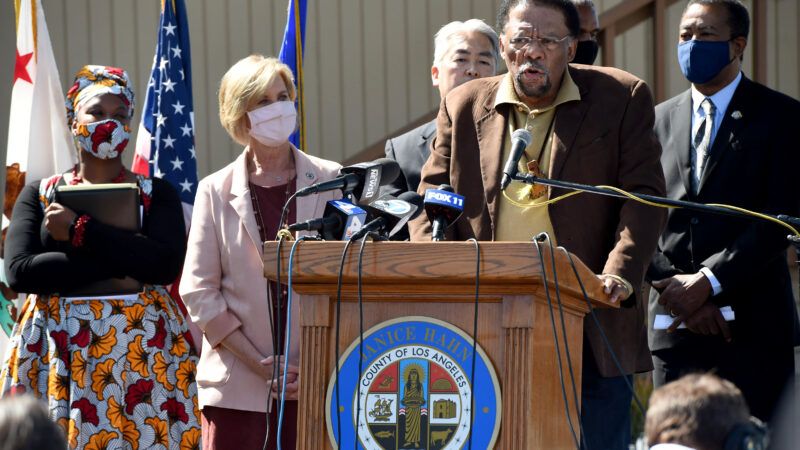California Returns Beach Property Wrongly Taken From Black Family via Eminent Domain
The government confiscated Bruce's Beach at racists' behest.

California Gov. Gavin Newsom signed a law last week that would return beachfront property to the heirs of an African-American couple who had owned it in the early 1900s. While the move is rightly being hailed as a step forward in undoing a racial injustice, it should also be recognized as undoing a stark example of eminent domain abuse.
Charles and Willa Bruce moved to California from New Mexico in the early 1900s, at a time when many African Americans were moving west. Starting in 1912, they bought up several plots of beachfront land in Manhattan Beach. On this property, Mrs. Bruce built a resort, which she named Bruce Beach Front; this was later shortened to Bruce's Beach. The property featured a café, a dance hall, rooms for rent, bathing showers, and dressing tents.
Many white residents bristled at the black-owned and -patronized business. The Los Angeles Daily Times reported that nearby white landowners "deplore the state of affairs." They responded first by putting up "No Trespassing" signs all along the edges of the property, forcing patrons to walk an extra half mile to get to the resort. Over time, racists started making profane phone calls and letting the air out of beachgoers' tires. The Ku Klux Klan started holding rallies on the beach, burning crosses on hills overlooking the resort, and in one case burning a mattress on the property. Yet the resort thrived for more than a decade, with Mrs. Bruce buying up nearby plots of land to expand the business; during the same period, many black families moved to the area, buying and building houses nearby.
Finding direct violence and intimidation ineffective, the racist landowners tried a different tool: the local government.
A real estate developer petitioned the Manhattan Beach City Council, which voted unanimously to condemn and seize the Bruces' property under eminent domain, ostensibly for the purpose of building a public park. Protests were ignored, lawsuits were dismissed, and ultimately the Bruces had no choice but to acquiesce to the order. In compensation, they asked for a total of $120,000 for the property and for damages incurred; the city ultimately gave them just $14,500. The land then sat undeveloped for more than three decades before the city built the park, which now includes Los Angeles County's lifeguard training facility. Modern estimates put the value of the requisitioned land around $20 million.
As the land is restored to private ownership, the story should serve as a stark reminder that more often than not, and no matter who is in charge, eminent domain is a power easily abused. The Takings Clause of the Fifth Amendment allows for "private property [to] be taken for public use" as long as "just compensation" is provided in return. But in practice, the terms "public use" and "just compensation" have both proven remarkably elastic.
In 2005, the U.S. Supreme Court ruled in Kelo v. New London that virtually any potential benefit to the public qualified as "public use." That decision allowed a city to bulldoze several families' homes to make way for the expansion of a Pfizer Pharmaceuticals plant. Pfizer eventually pulled out of the plan, and the development was never built; the site remains empty today.
Neither Kelo nor what happened to the Bruce family are outliers. California deserves credit for finally attempting to make amends to the Bruces, but if state officials want to stop such injustices from happening again, they should move to roll back their own powers of eminent domain.


Show Comments (40)